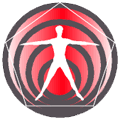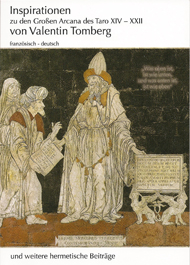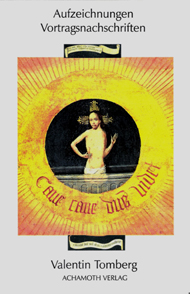 Die deutsche Version dieser Homepage finden Sie unter fhab.de Die deutsche Version dieser Homepage finden Sie unter fhab.de |
 |
|
Tomberg's excerpt of his life in words
Tomberg on his study on the Tarot
„In St. Petersburg in Russia some 50 years ago a group of esotericists came together as the blossom of the Intelligentsia of the capital. This group was internally composed in a hierarchical manner; i.e. it comprised grades; Martinists, Templars and Rosicrucians. It was – to be more precise – a schooling or an education comprising three “courses” or “classes”: The first, or Martinistic; the second, or Templaristic, and the highest or Rosicrucian. At the head of the entire school stood the Professor for Specific Mathematics of the Pagen-College (Papaskiy Korpus) of St. Petersburg, G. 0. M e u b e s.
After the Bolshevistic revolution which naturally brought an end to the work of this group, the author of these lines met some of the members of this scattered group and became friends with them. As the friendship was genuine, i.e. founded on a mutual, wholehearted trust, these members, who belonged to the elite of the Rosicrucian group, conveyed everything they knew to him and they told him everything concerning the work of the group including the crises and awkward experiences they had gone through. This was in 1920.
As he learnt to what degree a common work on the Tarot can be fruitful for study, research, enthusiasm and progression in the esoteric realm, the writer of these lines became very impressed although he had already studied the masterful work of the engineer S c h m a k o v ,The Major Arcana of the Tarot’ (Velikiye Arcany Taro), a book that is almost double the size of for instance ,The Tarot of the Medieval Draftsmen’ (,Le Tarot des Imagiers du Moyen-Age’) by Oswald Wirth or ,The Tarot of Marseille’ by Paul M a r t e a u and the book on the Tarot by P.D. O u s p e n s k y from the year 1917. However, the entire work of the Martinistic-Templaristic-Rosicrucian group based itself on the Tarot. The study of the Kabbalah, of Magic, Astrology and Hermeticism was led and inspired by the Tarot. That lent coherence and an unusual organic unity to the entire work. Every problem of the Kabbalah, Magic, Astrology, Alchemy a.s.o. was dealt with in such a way that it was related to a specific Arcanum of the Tarot. In this way f. ex. they meditated on the 22 letters of the Hebrew alphabet in order to descry their kabbalistic meaning. And one derived at the conclusion that every letter of the Hebrew alphabet to a kabbalistic comprehension complies with a particular Arcanum of the Tarot.
So the letter Shin (J), the 21st letter of the Hebrew alphabet, was accorded to “the Fool” or “the Jester”. It was said that that letter was the letter of the Arcanum of the Fool. And one added confidentially that the esoteric name of the Arcanum, the Fool, is Amor (love).
So the letter Shin (J), the 21st letter of the Hebrew alphabet, was accorded to “the Fool” or “the Jester”. It was said that that letter was the letter of the Arcanum of the Fool. And one added confidentially that the esoteric name of the Arcanum, the Fool, is Amor (love).
The teaching and the experiences of this group of esotericists from St. Petersburg only live within the soul of the author of these letters as a general impulse toward the deepening of the symbolism of the Tarot received during the time of his youth now (as a matter of fact he has not hitherto used that teaching in these letters due to the fact that the Tarot during the ensuing 45 years has revealed itself in a new aspect that by far transcends what he learnt from the St. Petersburg group in depth and consequence. There is, however, one exception to this, namely the one I just referred to: That the Arcanum the Fool (or the Jester) corresponds to the letter Shin; that its number therefore is 21, and that its esoteric name is Love.”
(From „Meditationen über die Großen Arcana des Taro [19]“, Meisenheim am Glan, 1972 S. 470)
---------------------------------
[19] Meditations on the Tarot
« back

